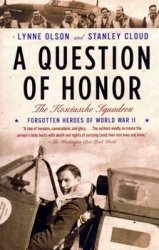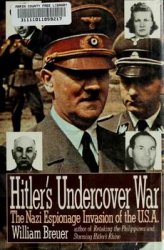The ideological nature of the Cold War conflict played out not just in the shape of the Cold War but in the instruments used to fight it. Both sides undertook massive military buildups, with as much as one-third of the Soviet economy devoted to military production. But armaments were far from the only weapons used in the Cold War. Since both sides stressed the importance of economic production as proof of their own system’s superiority, both used economic growth - the ability to “deliver the goods" - as a key indicator of their own success.38 The focus on growth applied not only to the superpowers themselves but also to the other nations in each camp. Thus, Americans celebrated the German “economic miracle" and its Japanese counterpart, while Soviet officials did the same for its major development projects in the Third World - India’s Bhilal steel plant, Egypt’s Aswan dam, and other high-profile efforts. Finally, each side relied heavily on information/propaganda operations, further suggesting the ways in which the Cold War was a battle for influence. As such, it took place on an ideological plane, seeking persuasion over conquest - but when necessary using conquest as a tool for persuasion. As historian Frank Ninkovich noted wisely, international conflicts in the twentieth century were predicated on the idea of an international audience.39 The notion of global public opinion showed the ways in which modern conflicts - and the Cold War in particular - were fundamentally ideological in their origins and operations.
Yet the ideological vigor of the early Cold War did not survive the first two decades of the conflict. Two existential crises in the early 1960s challenged some of the fundamental premises of the ideological Cold War. The first - the erection of the Berlin Wall in the summer of 1961 - ratified the division of Europe dating back to 1949. The inability of the East German economy to match the economic miracle of its western neighbor grew increasingly problematic, as Berliners sought to flee the East for the West in steady (and steadily increasing) numbers. Khrushchev eventually acceded to the East German proposal to separate East and West Berlin, ostensibly to protect the East from Western infiltration but in fact to reduce the exodus of East Germans; the Wall became the final line drawn in Europe during the Cold War. Though it was the target of President Kennedy’s fierce rhetoric, he took few direct actions. Second, the Cuban Missile Crisis in the fall of 1962 revealed the dangers to both sides of escalating and militarizing the Cold War in the Third World, showing how proxy competition in a nuclear age could endanger the superpowers themselves. Changes in personnel and ideas also changed the nature of American-Soviet relations. The ouster of Khrushchev - in large part for his failings in Cuba - marked the changing of the guard in the USSR. His successor, L. I. Brezhnev, moved away from the ideological paradigm that had motivated his predecessors. At home, he favored actually existing socialism over the bright future. Historian Vladislav Zubok argues that Soviet elites, generally, had traded in some of their ideological fire for improvements in standards of living and employment opportunities, and for a more stable existence than was possible in the quarter-century of Stalin’s rule.40 Internationally, the Soviet Union chose its allies on the basis of strategic alliances, focusing less on bringing about socialist revolutions. The death of Kennedy, who had viewed the Cold War as a battle between different ways of life, similarly left American leadership without an energetic proponent of ideological struggle. As President Lyndon B. Johnson dealt with one product of American ideology - the deepening US involvement in Vietnam - he wrestled with the notion that Americans should "pay any price" to spread liberalism around the world. But it would take Richard Nixon to bring American-Soviet relations to focus on interests rather than ideas, an underlying principle of detente.
American-Soviet relations had begun in 1917 with each nation’s efforts to transform the other. By 1964, though, each side had accepted the existence of the other and its sphere of influence. They would still compete, but in ever-more-marginal areas - and what, after all, could be more marginal to superpower interests than Vietnam and Angola? At the same time, the superpowers sought more measures of coexistence and, to a surprising extent, normalized the Cold War. American-Soviet conflict would continue for another quarter-century, but it would never be the same.
The ideological battles that dominated the middle decades of the twentieth century left many important and disturbing legacies. The universalism ofboth the American and Soviet ideologies turned a bipolar conflict into a global conflagration, with devastating results. The Third World suffered from superpower embrace, which turned areas of domestic dispute into geopolitical hotspots. The brief but intense focus on Third World countries - Iran, Guatemala, Egypt, Taiwan, Indonesia, Lebanon, and Cuba in short succession - left nations with despotic rulers who served the needs of their superpower sponsors or themselves rather than their own nations’ interests. Civil wars became superpower proxy wars, multiplying the length, complexity, and destructive fallout of heretofore-local conflicts. In the name of appealing to a prosperous future, the world of the present suffered mightily.
The ideological nature of American-Soviet conflict marked its protagonists as well. Citizens on both sides, whether voluntarily or otherwise, would (in Kennedy’s famous words) "pay any price and bear any burden" in the name of victory. President Dwight D. Eisenhower enumerated some of the American costs as early as 1961. His farewell address bemoaned the rise of a "military-industrial complex" that had come into being under his watch and had distorted the politics, culture, and economy of the United States. The price borne in the USSR was much greater, but its public recognition much later; not until Mikhail Gorbachev took the reins in 1985 were there serious efforts to reduce the defense burden, restructure the economy, and open up a new public sphere. Gorbachev’s reforms failed, leading to the collapse of the Soviet Union in 1991; a country that for seventy-some years had declared itself a harbinger of the future was itself relegated to the dustbin of history. Within the United States came signs of triumphalism; it was not just neoconservative Francis Fukuyama who declared the "end of history," but a wide swath of the American policy elite that declared ideological victory.41 That confidence, bolstered by the universalism at the root of American liberalism and the military might acquired during the conflict with the Soviet Union, might be the Cold War’s most durable legacy.




 World History
World History









